Key takeaways:
- Patient anxiety is a natural response to uncertainty about illness and can be alleviated through open dialogue and emotional support.
- Hospital ministry plays a crucial role in providing spiritual and emotional care, fostering resilience and hope in patients.
- Building trust with patients is essential, achieved through consistent presence, shared experiences, and reliable follow-through.
- Involving families in the care process and providing them with coping resources can significantly support both patients and their loved ones during times of anxiety.
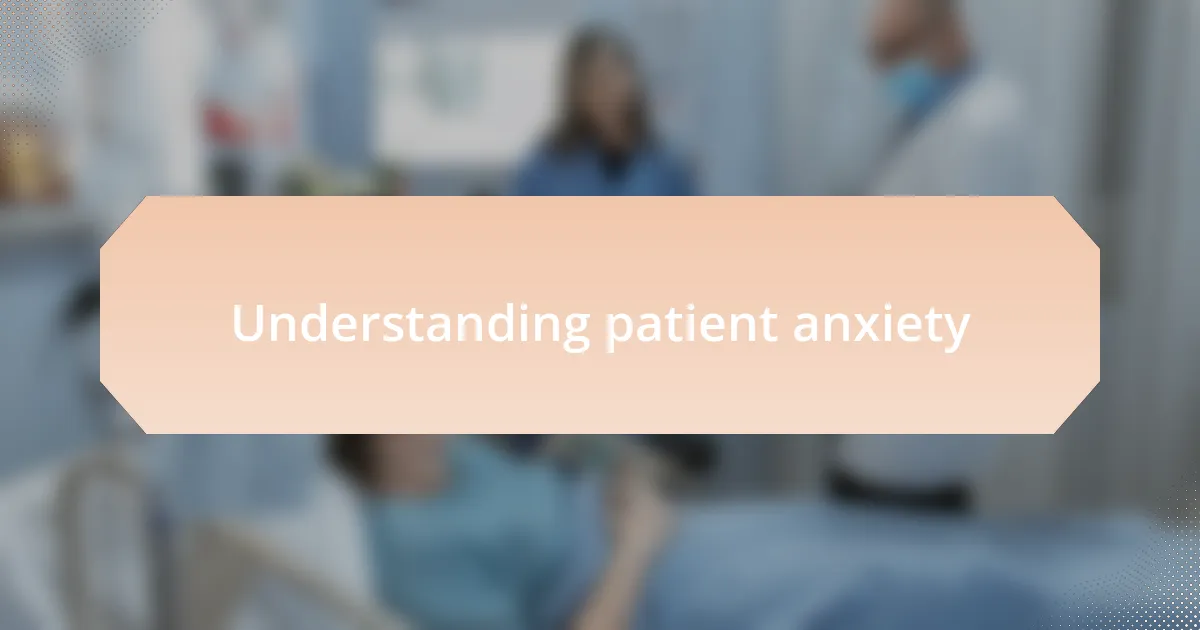
Understanding patient anxiety
Patient anxiety is often a natural response to the uncertainties associated with illness and treatment. I remember a time when a patient disclosed their fears about surgery, vividly expressing how the thought of the unknown felt like walking into a dark tunnel with no light at the end. This deep-seated anxiety can amplify feelings of vulnerability, making it essential to address these emotions authentically.
When I encounter a patient who is anxious, I often ask them to share their specific worries. This engagement sometimes reveals what lies beneath their anxiety—be it fear of pain, potential outcomes, or even the impact on their family. I’ve found that by acknowledging these fears, we can transform that intense energy into a dialogue, creating a bond that alleviates some of their distress.
It’s fascinating how the environment can also exacerbate or ease anxiety. I’ve seen patients in sterile, cold rooms feel even more isolated, as if the very walls are closing in on them. In contrast, a warm and welcoming space can foster a sense of safety and comfort. This reflects the importance of understanding that anxiety is not just a symptom; it’s an emotional experience that can greatly influence a patient’s journey through care.
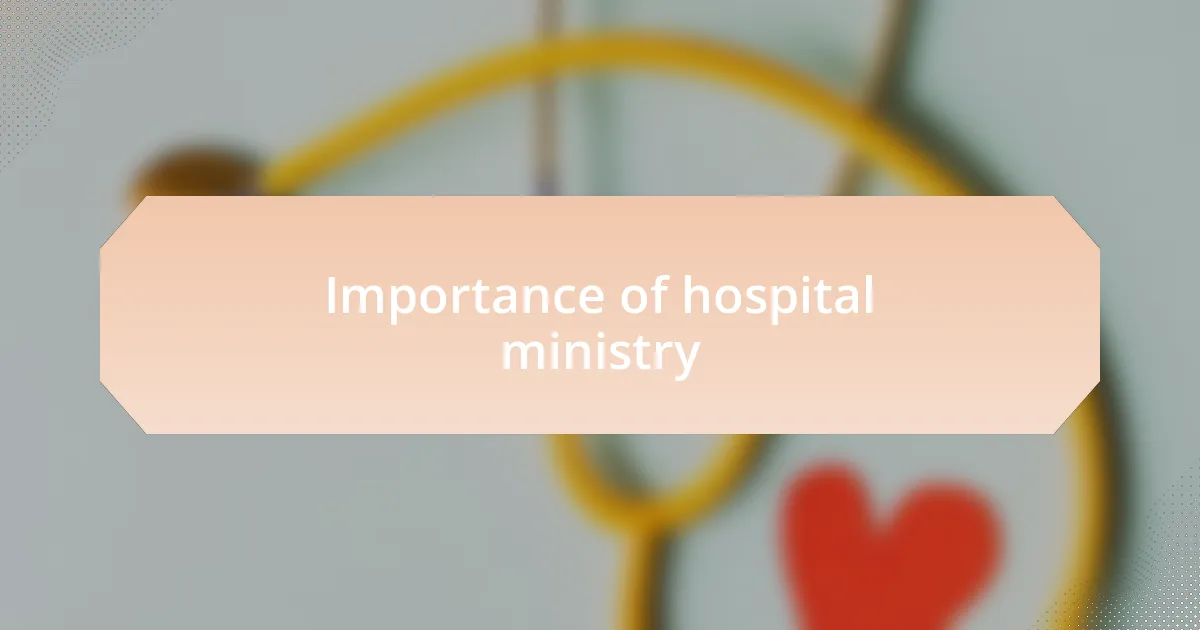
Importance of hospital ministry
The role of hospital ministry is crucial in bridging the gap between medical care and emotional support. I remember one patient who found solace in prayer, stating that it helped center their thoughts amidst the chaos of their diagnosis. This connection to faith and spirituality offered them hope—something that medical treatments alone could not provide.
Engaging with patients spiritually can lead to profound healing. I’ve witnessed moments where a simple conversation about faith transformed a patient’s outlook, turning despair into a sense of purpose. How often do we overlook the power of hope in the healing process? By addressing spiritual needs, hospital ministry fosters resilience in patients, empowering them to navigate their journeys with renewed strength.
Additionally, the presence of a supportive ministry provides reassurance in the face of fear. Patients often share how the company of a chaplain during difficult times made a significant difference in their emotional well-being. In those moments, it’s not just about healing the body; it’s about nurturing the spirit, which is equally vital for a comprehensive care approach.
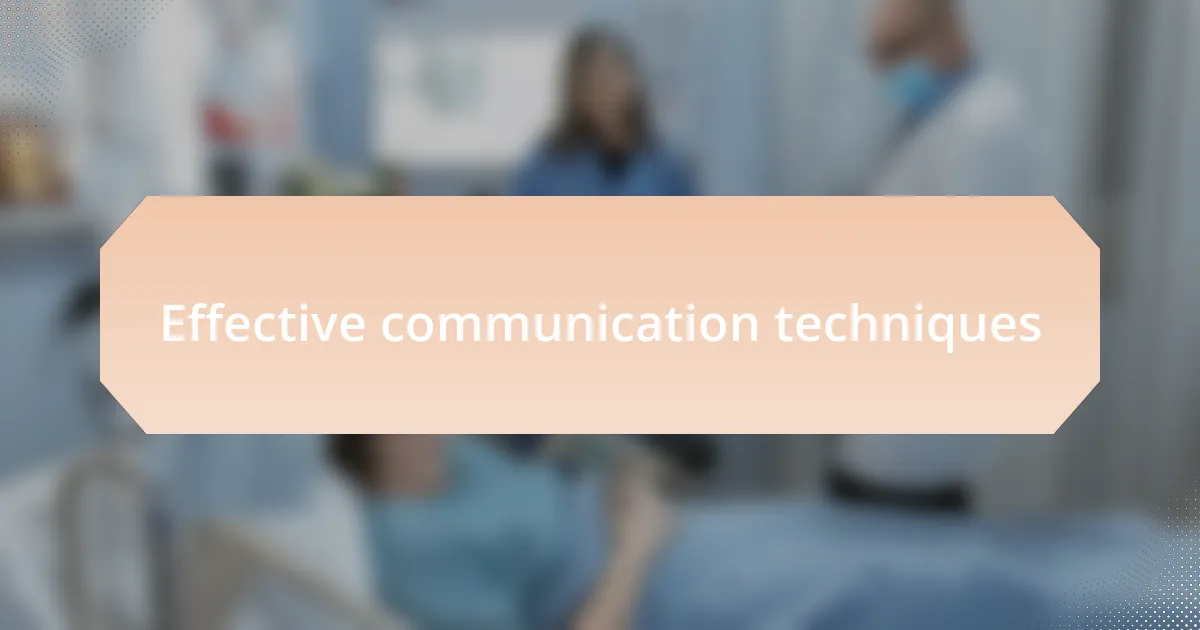
Effective communication techniques
Effective communication in a hospital setting goes beyond mere words; it’s about fostering connection. I remember sitting with a patient who was visibly anxious as they faced surgery. By simply leaning in, making eye contact, and listening attentively, I noticed their tension eased. This kind of presence can make a world of difference, transforming fear into trust.
Using clear and compassionate language is vital. I often find that when I explain medical procedures in straightforward terms, patients feel more in control. For instance, after breaking down a complex diagnosis into relatable concepts, a patient remarked, “Now I understand what’s happening to me.” This not only alleviated their anxiety but also strengthened our rapport.
Additionally, asking open-ended questions invites patients to share their feelings, fostering a safe space for dialogue. I tend to ask, “How are you really feeling about your treatment?” Such questions often lead to meaningful discussions that reveal underlying worries. I’ve seen how these conversations can help patients articulate their fears, making it easier for both of us to address them together.
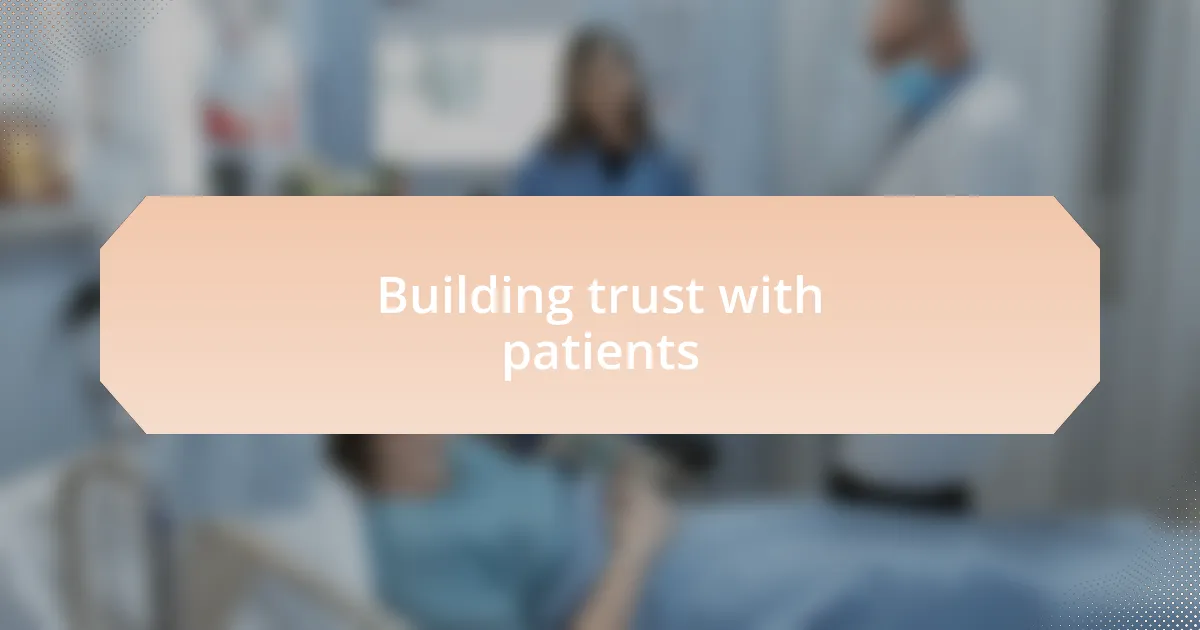
Building trust with patients
Building trust with patients is fundamentally about consistency and authenticity. I recall a time when I regularly visited a patient who seemed hesitant and uncommunicative. By simply showing up at the same time each day and expressing genuine concern for their well-being, I noticed their walls began to crumble. Isn’t it interesting how the act of being present can build a bridge of trust?
Establishing a sense of safety is essential, too. When I share personal stories of other patients who’ve faced similar fears, I can see their shoulders relax. It’s transformative for them to realize they’re not alone in their anxiety. Have you ever noticed how relatable experiences can turn apprehension into comfort?
Finally, I emphasize follow-through to build lasting trust. After promising to check on a patient’s test results, I make sure to do it diligently. That reliability reassures them that I genuinely care. When they know they can rely on me, it fosters a deeper sense of partnership in their care. How empowering it must feel for them to trust that someone is advocating for their needs!
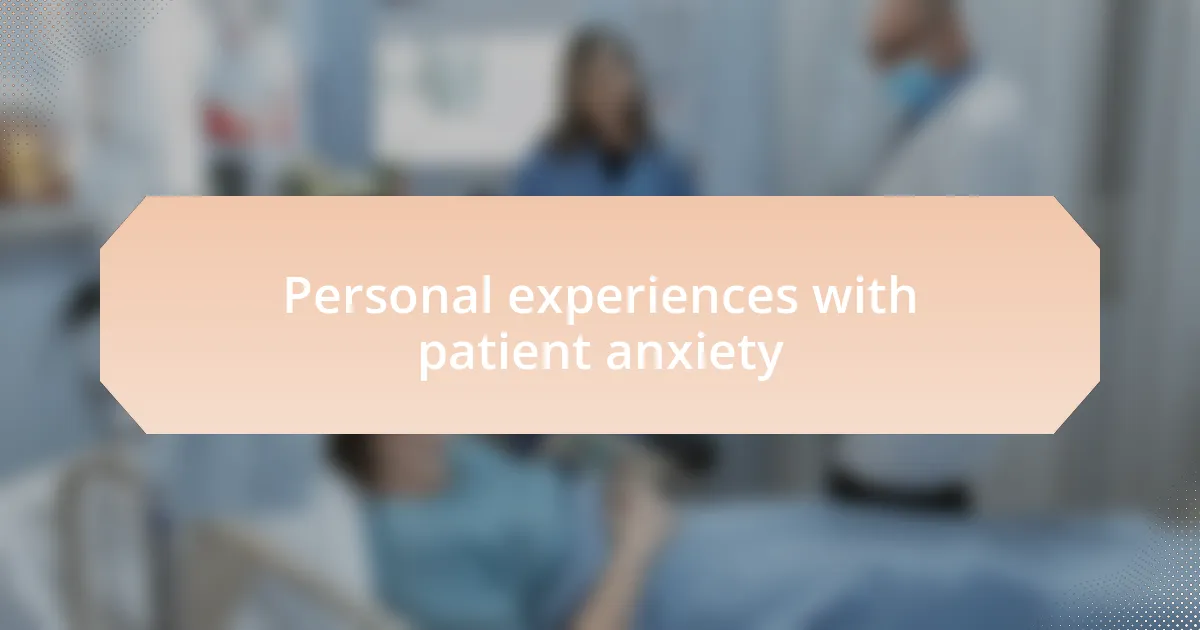
Personal experiences with patient anxiety
There was a time when I sat with a patient on the edge of her bed, her hands trembling and eyes filled with fear. Instead of launching into medical jargon, I simply asked her about the source of her anxiety. As she shared her worries about the unknowns of her treatment, I realized that sometimes, just listening can be the most effective way to ease someone’s mind. Have you ever felt how a compassionate ear can create a space for calm?
I remember another instance where a young boy was terrified of the needles often used in treatment. I knelt down to his level, shared my own childhood fears of needles, and even brought in a little toy he could squeeze during the procedure. His laughter amidst anxiety was a turning point for both of us. Isn’t it incredible how making a moment playful can significantly shift a person’s perspective?
Reflecting on these experiences, I’ve learned that addressing patient anxiety isn’t just about alleviating fear—it’s about connecting on a human level. When I see a patient’s anxiety transform from dread to a sense of hope, it reaffirms my belief in the power of empathy and understanding. How rewarding it is to witness the shift from fear into comfort!
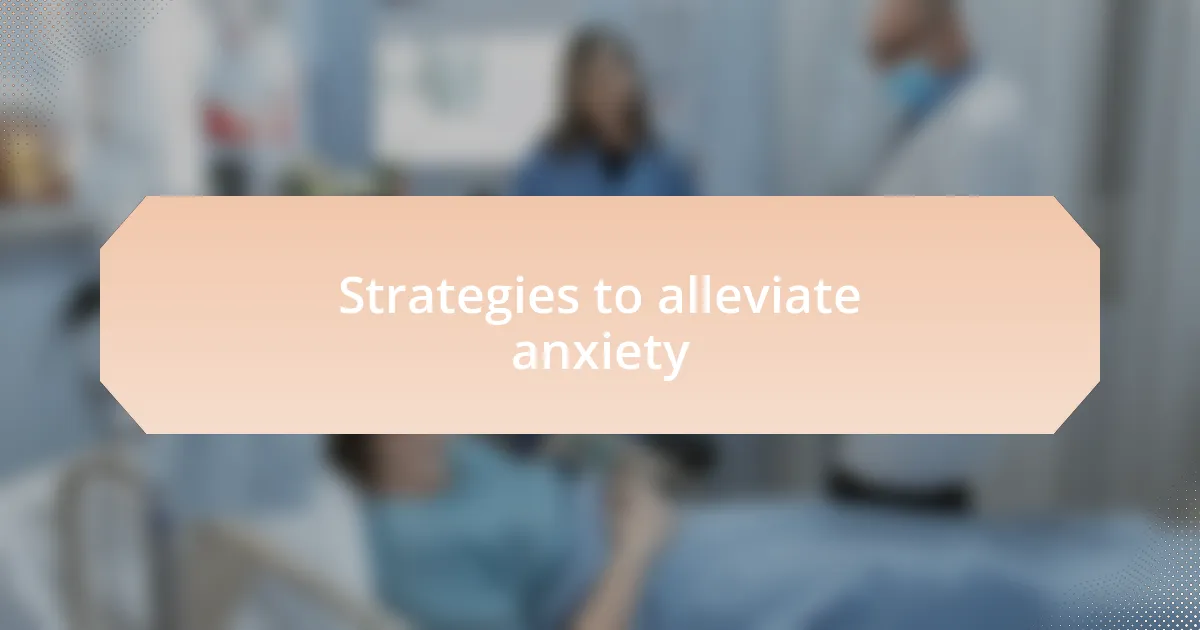
Strategies to alleviate anxiety
When dealing with anxious patients, I find that using deep breathing exercises can be incredibly effective. Recently, I guided an elderly gentleman through a simple breathing technique. As he inhaled deeply and exhaled slowly, I could see the tension in his body begin to ebb away. Have you noticed how focusing on your breath can shift your mindset?
I’ve also seen the power of distraction in moments of acute anxiety. During a particularly stressful treatment, I arranged for a family member to join the patient. Their shared stories and laughter actively diverted attention from what was happening. Isn’t it fascinating how connecting with loved ones can turn anxiety into shared comfort?
In my experience, providing clear, calm information about the procedures can also alleviate a patient’s fears. I recall explaining a complex situation to a patient’s family in simple terms. Watching their shoulders relax as understanding dawned on their faces reminded me just how vital communication is in easing uncertainty. What are some methods you use to empower those you care for?
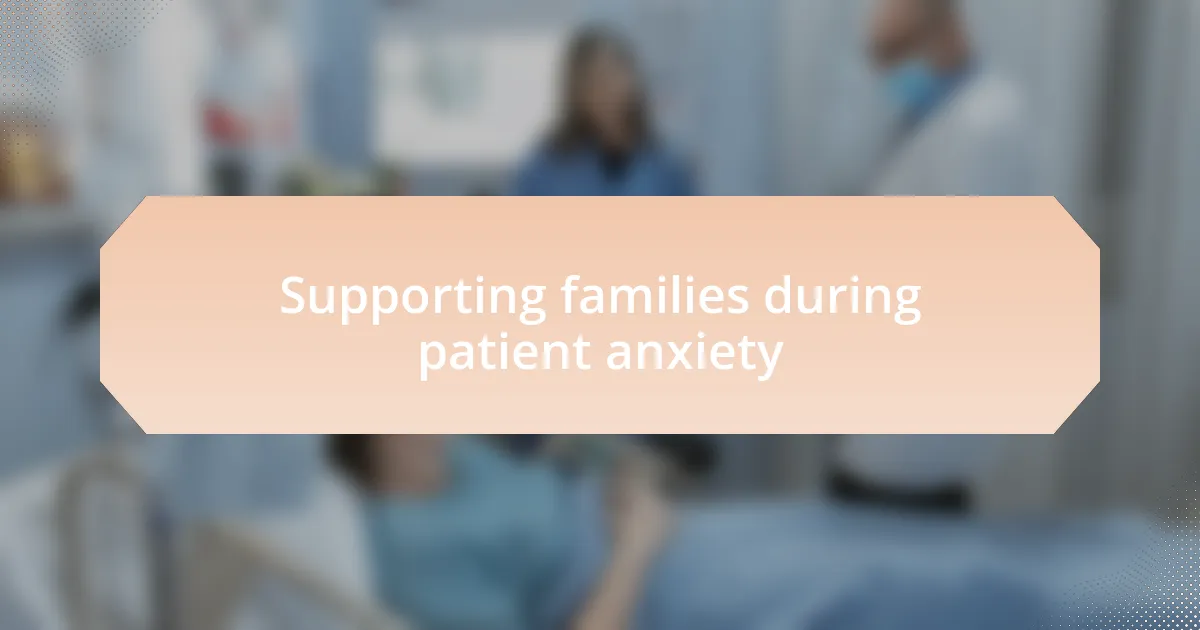
Supporting families during patient anxiety
When families are anxious about a loved one’s condition, I have found that including them in the care process can provide immense support. For instance, I’ve invited family members to participate in simple bedside activities, like arranging flowers or reading. This involvement not only distracts from the anxiety but also fosters a sense of togetherness. Have you ever observed how something as small as a shared task can strengthen emotional bonds during challenging times?
I remember a particular instance when a father expressed his fears regarding his child’s surgery. I took a few moments to sit with him in the waiting area, listening not just to his words but to the emotions behind them. It struck me how sharing that moment of vulnerability created a connection between us. How often do we overlook the healing power of empathy and presence in these high-stress situations?
Providing families with resources for coping is also crucial. I once organized a small workshop for relatives, covering techniques for managing their anxiety and supporting patients emotionally. The gratitude expressed afterward was palpable; many mentioned feeling empowered and equipped with tools to help both themselves and their loved ones. Isn’t it rewarding to think that we can make such a tangible difference in their journey?